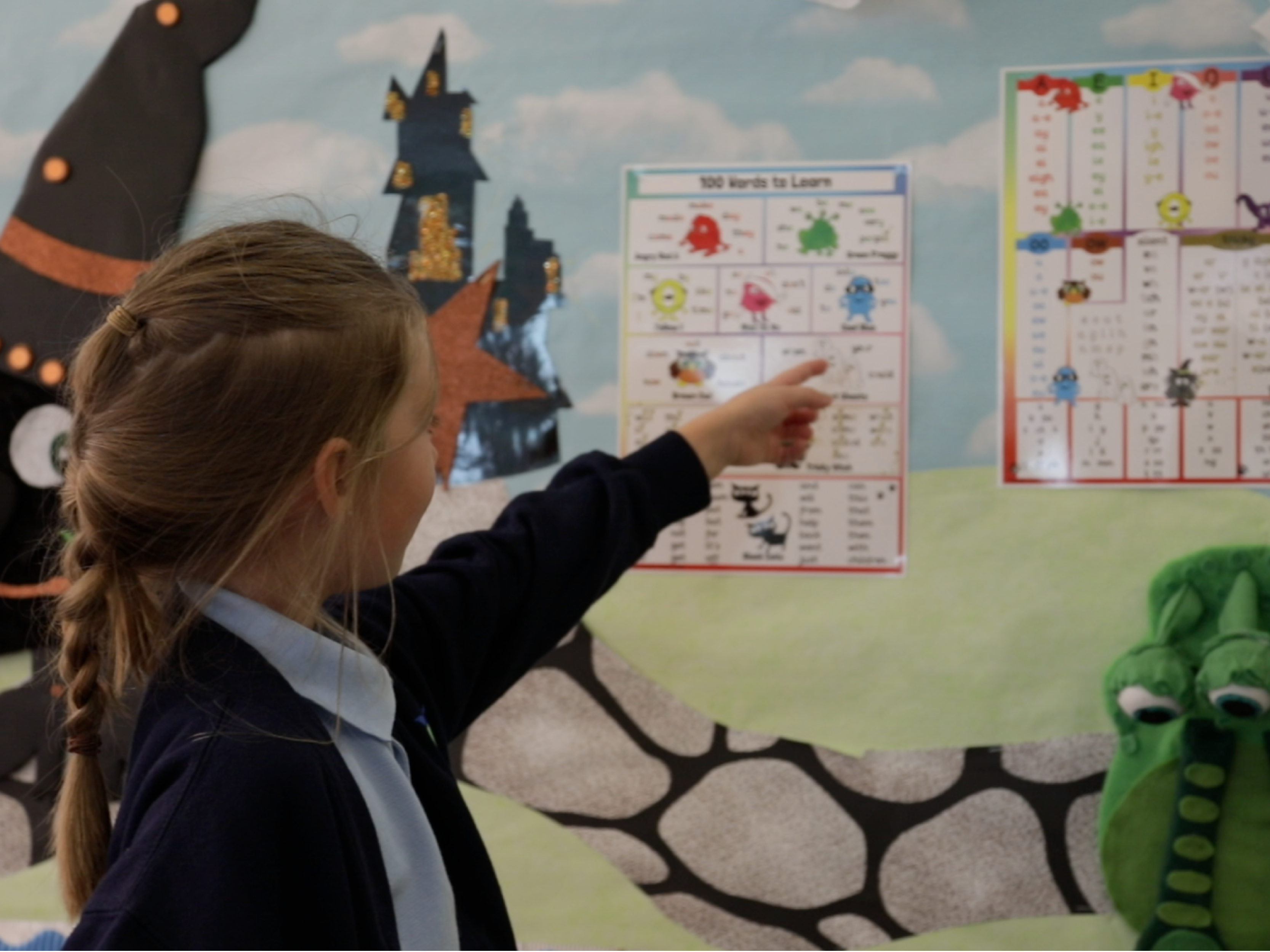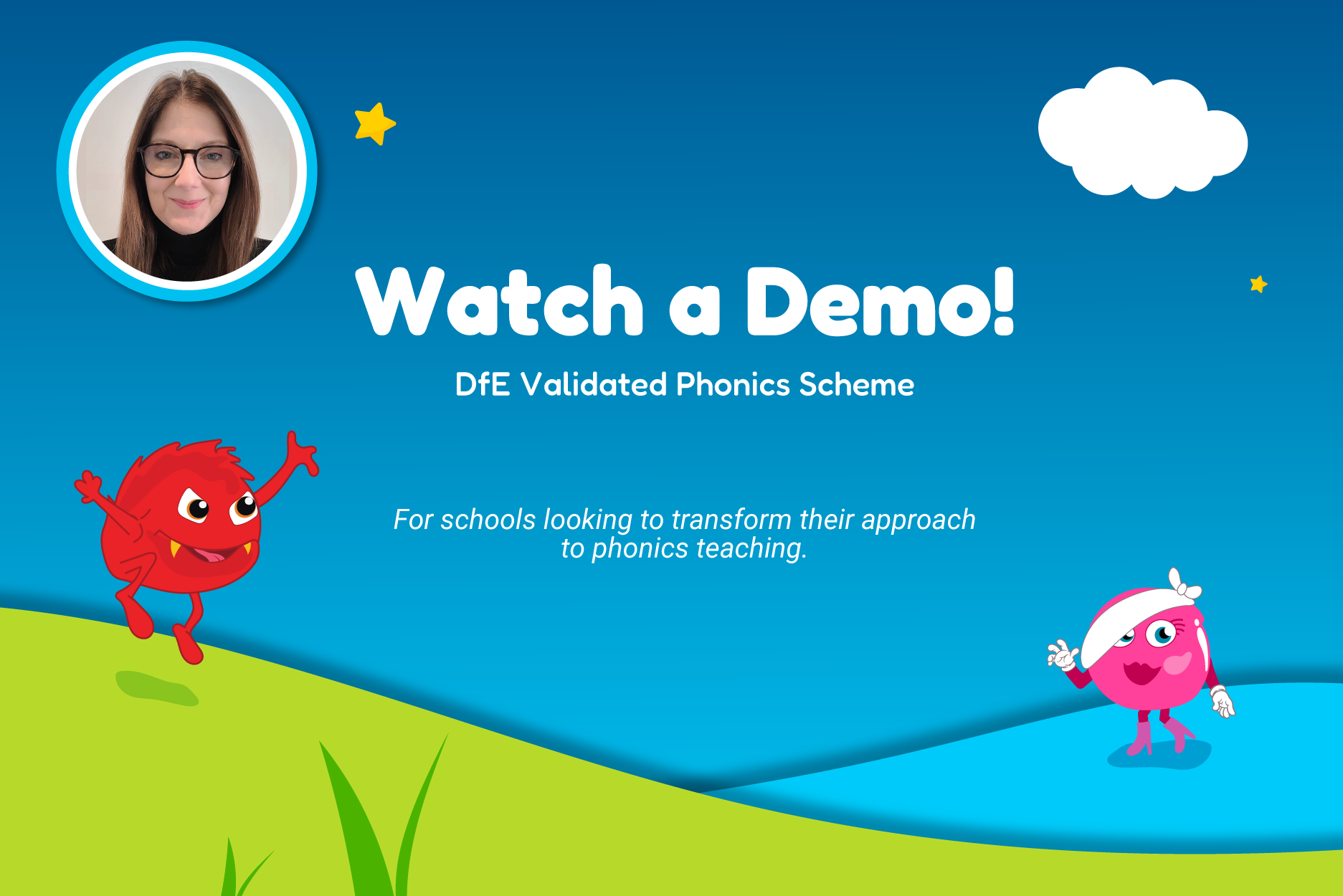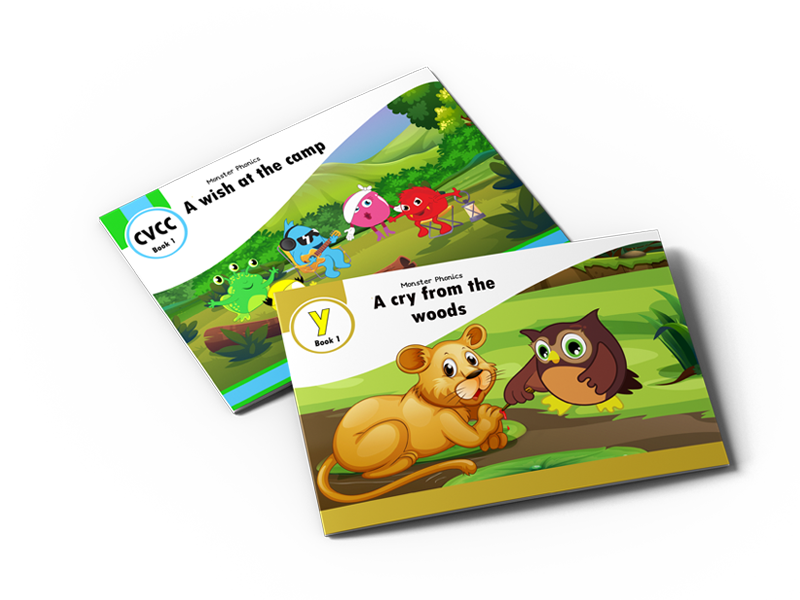Phase 1 (Nursery)
The Letters and Sounds guidance outlined six progressive phases to the teaching and learning of phonics. Phases 2 to 6 now form the basis of most SSPs, including Monster Phonics, and Phase 1 was specifically designed to outline the ‘Principles and Practice of High Quality Phonics Teaching’ for nursery providers.
Take a free 7 day trial
Child-Centred and Delivers Results
Our Nursery Programme is a comprehensive teaching programme for nurseries and nursery classes.
It covers all seven aspects of Phase 1 phonics, outlined in the Letters and Sounds guidance, and also recognises the importance of developing talk and language outlined in the Reading Framework. It has been developed alongside our DfE validated Systematic Synthetic Teaching Programme.
The 7 Aspects
- Environmental sounds
- instrumental sounds
- Body percussion
- Rhythm and rhyme
- Alliteration
- Voice sounds
- Oral blending and segmenting
Within each aspect above, there are three strands:
■ Auditory discrimination – tuning-in to sounds
■ Auditory memory and sequencing – listening and recalling sounds
■ Developing vocabulary and language comprehension – talking about sounds
Structured activities with the seven aspects help children to:
1. listen attentively;
2. enlarge their vocabulary;
3. speak confidently to adults and other children;
4. discriminate phonemes;
5. reproduce audibly the phonemes they hear, in order, all through the word;
6. use sound-talk to segment words into phonemes.
Browse the phased phonics teaching structure for schools.
- Phase 1 Phonics
- Phase 2 Phonics
- Phase 3 Phonics
- Phase 4 Phonics
- Phase 5 Phonics
- Phase 6 Phonics



